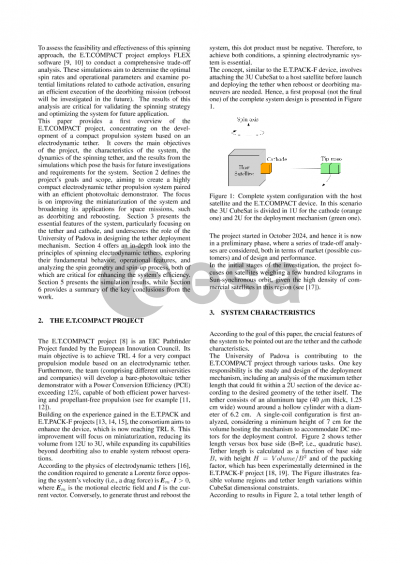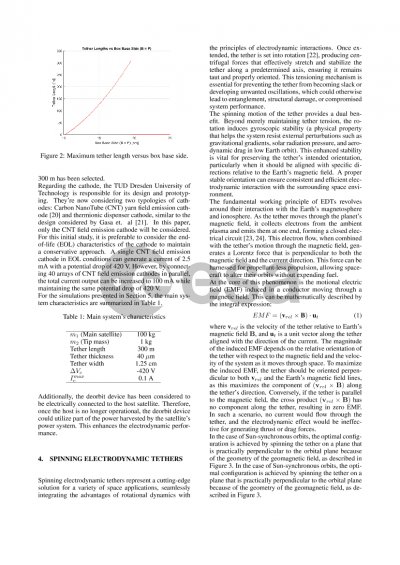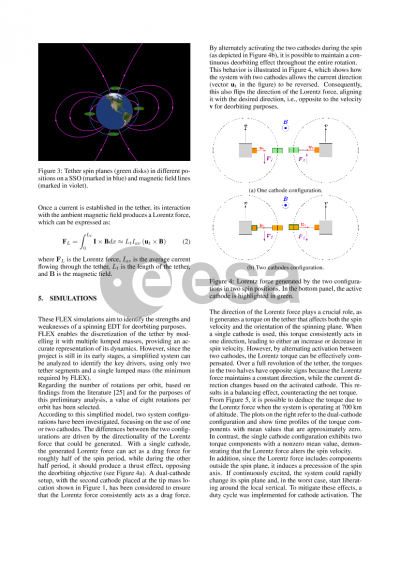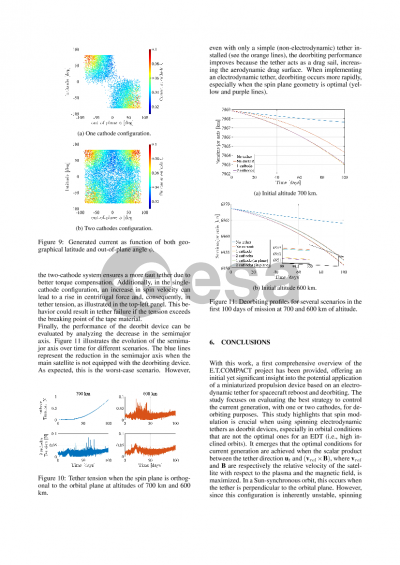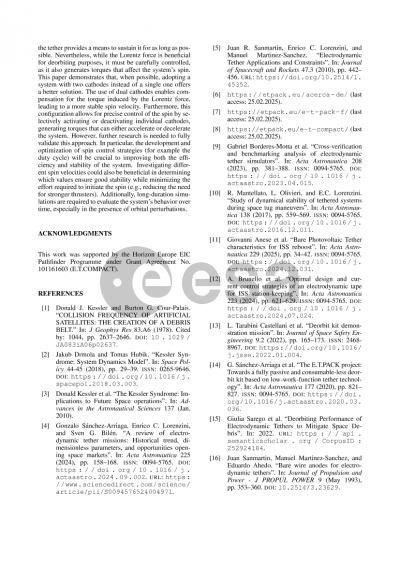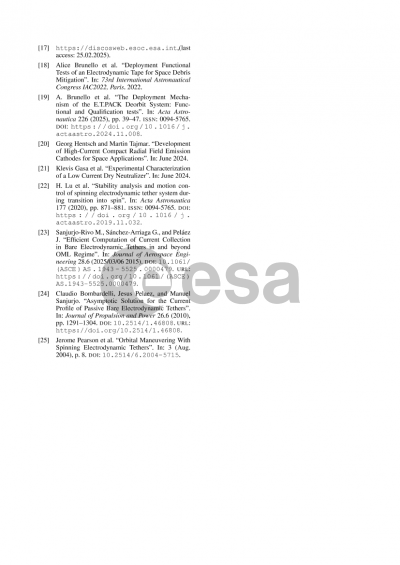Document details

Abstract
The increasing amount of space debris is one of the most urgent challenges for the sustainability of orbital activities. Each year, new satellites are launched into orbit, adding to the density of objects in low Earth orbit (LEO). This rise in orbital objects increases the risk of collisions. This phenomenon, known as the Kessler syndrome, describes a scenario where collisions between objects create a chain reaction of fragmentation, leading to even more debris and seriously jeopardizing the possibility of exploiting certain orbits. To address this threat, stricter regulations are being developed to enforce the controlled deorbiting of satellites at the end of their missions, particularly in LEO. One of these measures is the requirement to remove satellites within five years of the end of their operational life. This requirement has created a need for efficient propulsion systems and innovative technologies to enable satellites to reenter the atmosphere while possibly reducing costs and environmental impact. In this context, the E.T.COMPACT project is exploring new, propellant-less systems, focusing on electrodynamic tethers. These lightweight and compact devices are designed to occupy just a few CubeSat units, allowing them to be integrated into larger satellites. When the primary satellite completes its operational life, the tether is deployed, and, utilizing interactions with the Earth’s magnetic field to generate a force (Lorentz force), it is capable of gradually slowing the satellite enabling reentry. However, sun-synchronous orbits, among the most commonly used for satellites, pose specific challenges for electrodynamic tethers. In these orbits, alignment between the Earth’s magnetic field and the tether is not always optimal, which can limit the effectiveness of the deorbiting system. To address this issue, the project is experimenting with a spinning approach: by rotating the tether, the likelihood of alignment with the optimal magnetic field direction increases, thus enhancing Lorentz force generation. This approach requires accurately assessing the necessary spin rate to synchronize the tether movement with the magnetic field variations throughout the mission. To support this analysis, the project uses FLEX software to run simulations that validate the spinning strategy. These simulations help to verify the effectiveness of rotation in enhancing the tether performance and optimize the parameters for safe and efficient deorbiting. The success of the E.T.COMPACT project could revolutionize debris mitigation technologies, offering an effective and sustainable solution to the growing issue of orbital congestion.
Preview

